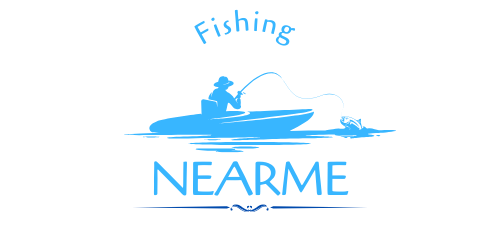The Florida East Coast is a prime destination for recreational saltwater fishing, offering a diverse array of marine species and stunning coastal landscapes. To ensure the sustainability of these valuable resources, the Florida Fish and Wildlife Conservation Commission (FWC) has established a comprehensive set of regulations governing fishing activities in this region. In this blog post, we’ll dive into the key details of these regulations, covering daily bag limits, minimum size limits, federal waters restrictions, and more.
Daily Bag Limits on the Florida East Coast
One of the fundamental aspects of Florida East Coast fishing regulations is the daily bag limit, which determines the maximum number of a particular species that an angler can harvest in a single day. These limits are designed to protect the long-term health of marine populations and promote responsible fishing practices.
| Species | Daily Bag Limit |
|---|---|
| Most Species | 2 per harvester |
| Snook | 1 per harvester (with a snook permit) |
| Bay Scallops | 2 gallons whole or 1 pint meat per harvester (with varying season dates by county) |
It’s important for anglers to familiarize themselves with these daily bag limits and ensure they adhere to them during their fishing trips.
Minimum Size Limits on the Florida East Coast

In addition to daily bag limits, the FWC has also established minimum size limits for certain species to protect juvenile and immature fish, allowing them to reach reproductive maturity and contribute to the overall population.
| Species | Minimum Size Limit |
|---|---|
| Blackfin Tuna | No specific size limit |
| Atlantic Grouper | 20 inches |
Anglers must carefully measure their catch and release any fish that do not meet the minimum size requirements.
Fishing in Federal Waters off the Florida East Coast
The Florida East Coast is bordered by both state and federal waters, and it’s important for anglers to understand the regulations that apply in each jurisdiction. In general, the state regulations enforced by the FWC also apply in federal waters, with some additional gear restrictions for reef fish species.
It’s crucial for anglers to familiarize themselves with the specific regulations and restrictions that govern fishing in federal waters, as they may differ from the state-level rules.
Unregulated Species on the Florida East Coast
While the majority of popular recreational species are subject to specific regulations, there are some species that are not currently regulated by the FWC. These unregulated species have a general harvest limit of 100 pounds or two organisms, whichever is greater.
Some examples of unregulated species on the Florida East Coast include:
- Ladyfish
- Bonito
- Menhaden
- White Grunt
- Southern Stingray
- Gulf Kingfish (Whiting)
- Pinfish
- Atlantic Croaker
- Jack Crevalle
- Cero Mackerel
- Hardhead Catfish
- Gafftopsail Catfish
- Lionfish
It’s important to note that while these species are not subject to specific regulations, anglers should still practice responsible fishing and conservation efforts to ensure the long-term sustainability of the marine ecosystem.
Gear Restrictions on the Florida East Coast
In addition to the regulations governing catch limits and size restrictions, the FWC has also implemented certain gear restrictions to protect marine species and habitats.
- Spearing Prohibited: Spearfishing is generally prohibited, with the exception of lionfish, which can be harvested using dipnets, pole spears, or Hawaiian slings.
- Multiple Hooks Prohibited: When using live or dead natural bait, anglers are prohibited from using multiple hooks.
Adhering to these gear restrictions is crucial for maintaining the health and balance of the Florida East Coast’s marine environment.
Licenses and Permits for Fishing on the Florida East Coast
To legally engage in recreational saltwater fishing on the Florida East Coast, anglers must possess the appropriate licenses and permits. These include:
- Saltwater Fishing License: Required for all recreational fishing activities, available through various channels, including online, mobile apps, and local license agents.
- Snook Permit: Required for the harvest of snook when a saltwater license is required.
- Spiny Lobster Permit: Required for the harvest of spiny lobster.
Anglers should ensure they have the necessary licenses and permits before embarking on their fishing adventures to avoid any legal complications.
Additional Resources for Florida East Coast Fishing Regulations
To stay up-to-date with the latest regulations and ensure compliance, anglers can utilize the following resources:
- Fish Rules App: A mobile application that provides comprehensive and up-to-date information on saltwater and freshwater fishing regulations in Florida.
- MyFWC.com: The official website of the Florida Fish and Wildlife Conservation Commission, which offers detailed information on fishing regulations, permits, and conservation efforts.
By familiarizing themselves with these resources and the regulations outlined in this blog post, anglers can enjoy a safe, responsible, and sustainable fishing experience on the Florida East Coast.
Reference:
- https://www.sitd.us/files/234c1bada/Jan2021_FL-FWC-FishingRegulations.pdf
- https://www.eregulations.com/assets/docs/guides/24FLSW_JAN-LR.pdf
- https://www.cyberangler.com/articles/fishing_regulations.html
- https://myfwc.com/fishing/saltwater/recreational/
- https://myfwc.com/fishing/saltwater/
